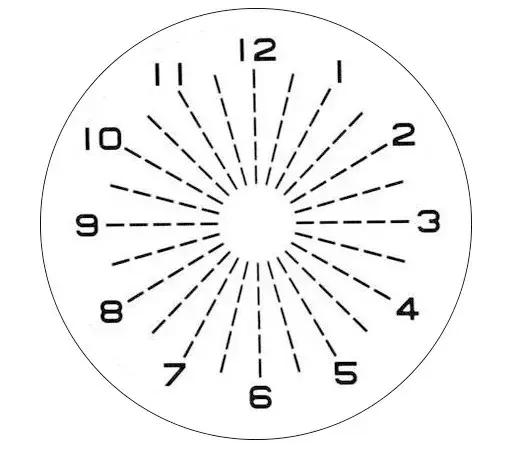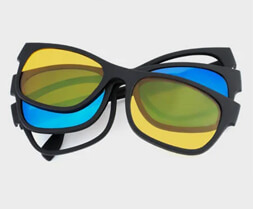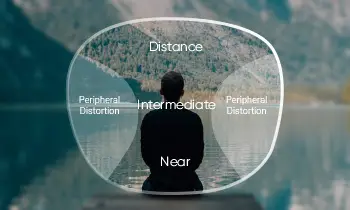What is astigmatism?
Astigmatism is usually due to uneven curvature or thickness of the cornea of the eye, causing the light entering the eye to be inaccurately focused on the retina at the back, resulting in symptoms of blurred, distorted, and double vision of objects.
Under normal circumstances, our eyes are spherical, much like a basketball. The surface curvature of different sections is perfectly uniform, allowing the image to be projected onto the retina preparedly. In contrast, the eyes of astigmatism patients change from the original spherical shape to a rugby ball shape; their corneal refraction interface curvature is not even, resulting in the different refractive ability of the eye in different directions. Parallel light rays are refracted through the eye, forming multiple focal points, hence blurred seeing and double vision.

Normal Vision

Nearsightedness or Presbyopia

Astigmatism
Why is nearsightedness often accompanied by astigmatism?
1. Scientific studies have shown that astigmatism is present in most people, even those with normal vision. Because we blink up and down, the horizontal axis of the eye is longer than the vertical axis, and there is usually about 50 degrees of physiological astigmatism, which is normal, does not affect life, and does not require treatment.
2. Nearsightedness and astigmatism are two eye diseases mainly caused by refractive errors in the eyes. Irregular eye habits can cause nearsightedness along with astigmatism. Ordinary people have about 50 degrees of physiological astigmatism, so the process of nearsightedness formation will cause astigmatism to deepen, affecting vision. Therefore, for most nearsighted patients, astigmatism often occurs along with nearsightedness.
How Do You Know If You Have Astigmatism?
The most reliable way to confirm astigmatism is with a professional eye exam at an ophthalmology clinic. But there are signs you can look out for on your own. One of the most common is visual fatigue that lingers even when you’re wearing glasses. Many people assume tired eyes come only from too much screen time or not blinking enough—but in reality, eye strain can also result from uncorrected or improperly corrected astigmatism.
Most people know that nearsightedness and farsightedness require proper correction. What often gets overlooked is the role of astigmatism correction and, just as importantly, the orientation of its axis. Astigmatism is simply another type of refractive error, but if it isn’t corrected effectively, it can cause serious vision discomfort and blur.
Try an Astigmatism Test at Home
If you’re curious, you can try a simple astigmatism test at home using what’s known as an astigmatism dial test (sometimes called an astigmatism chart test). This is the same type of chart that eye doctors use, but you can also find versions as an astigmatism online test.

Astigmatism dial test chart
Here’s how to try it yourself:
1.Look at the astigmatism dial image (shown above) with one eye at a time, without glasses or contact lenses.
2.Hold your phone at eye level, then move it closer or farther away until the dotted lines become clear. Keep it at that distance.
3.With each eye separately, pay attention to how the lines appear.
How to interpret the results:
- If all of the lines look evenly spaced, with no noticeable differences in thickness or darkness, you likely don’t have astigmatism.
- If certain lines appear noticeably darker, thicker, or longer than others, it may suggest astigmatism. The direction of the darker line typically corresponds to the axis of astigmatism in that eye.
A Note on Online Tests
While tools like the free online astigmatism test can be a quick and convenient way to check your vision, they aren’t a substitute for a professional exam. If you notice uneven lines or experience persistent eye strain, it’s best to schedule a comprehensive check-up with an eye care professional.
Can glasses fix astigmatism?
Astigmatism glasses contain prescription lenses made to correct astigmatism in the eyes. First, astigmatism, like nearsightedness and presbyopia, is a common eye disease. Most importantly, these diseases are irreversible, which means that there is no cure once we suffer from nearsightedness, astigmatism, or presbyopia.
So, the answer is obvious: astigmatism cannot be cured or fixed. When you discover astigmatism, the main task is to measure your astigmatism prescription as soon as possible and accurately and then wear the right astigmatism correction glasses.
Buy astigmatism glasses online
Before buying astigmatism glasses, we need to know about the prescription, and the essential part of the prescription is the prescription data. Typically there is a table on our prescription sheet, and the second column under the heading "CYL" or "Cylinder" is the measured astigmatism data, distinguishing between left and right eyes. To know the other data in the prescription form, you can refer to How to Read Prescription (RX).

As eyewear technology continues to evolve, more and more formerly complex production processes have become commonplace, including prescription eyeglass lenses. Therefore, we highly recommend that patients with astigmatism less than 400 degrees go online to make their purchases. On the one hand, these astigmatism lenses have become very common and do not require additional attention. On the other hand, you can no longer be fooled by store salespeople when buying these simple astigmatism glasses; they are more cost-effective.
People who can buy astigmatism glasses online need to be able to:
- - Know your prescription data very well.
- - Know what kind of eyeglass frames to choose to match.
- - Strong hands-on ability to make adjustments.
- - Want more affordable and cost-effective prescription glasses.
- - Willingness to try new things.
Buy Astigmatism Glasses Online








































